
Love Symbol is the fourteenth studio album by American recording artist Prince, and the second of two that featured his backing band the New Power Generation. It was released on October 13, 1992, by Paisley Park Records and Warner Bros. Records. It was originally conceived as a "fantasy rock soap opera" with various spoken segues throughout, and contains elements of R&B, funk, pop, rock, and soul.
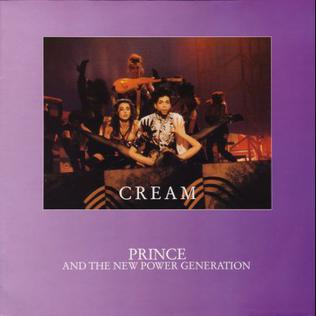
"Cream" is a song by American singer-songwriter Prince and his backing band the New Power Generation, released in September 1991 by Paisley Park and Warner as the second single from Prince's 13th studio album, Diamonds and Pearls (1991). In a 2004 MTV special, Prince joked that he wrote the song while looking at himself in the mirror. "Cream" became Prince's fifth and last number-one single on the US Billboard Hot 100, staying at the top for two weeks. The song entered the top 10 in 15 other countries worldwide, peaking within the top three in Australia, Canada, Norway, and Switzerland. Its music video was directed by Rebecca Blake.
Rosie Gaines is an American singer, songwriter and record producer from Pittsburg, California. Gaines is a former band member of Prince's group the New Power Generation. She duetted with singer Prince on the hit song "Diamonds and Pearls". She released a number of dance hits, the most notable being "Closer Than Close", which made the top 10 on the UK Singles Chart in 1997.
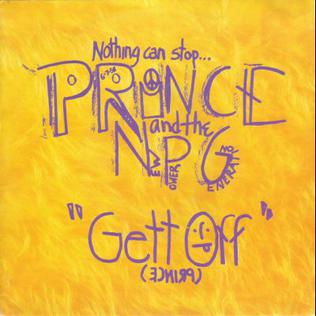
"Gett Off" is a song written and produced by American musician Prince, released in June 1991 by Paisley Park and Warner Bros. as the lead single from his thirteenth album, Diamonds and Pearls (1991). The album was his first with his backing band the New Power Generation. "Gett Off" was a hit on both sides of the Atlantic, reaching number four in the United Kingdom; the maxi-single was too long and pricey to appear on the UK Singles Chart, so this release was classified as an album, peaking at number 33 on the UK Albums Chart in August 1991.

"Diamonds and Pearls" is the title track of American musician Prince and The New Power Generation's 1991 album and was released as a single in November 1991. The song is an upbeat ballad, given a rock edge with guitar and heavy drumming. It also features the vocals of NPG member Rosie Gaines. The ballad is an expression of love and not lust, as is the theme on some of the other singles from the album. It was a top 10 hit, reaching number three in the US and the top spot on the R&B chart. The pearls in the accompanying music video come from Connie Parente, a Los Angeles jewelry collector and designer.

"New Power Generation", or "N.P.G.", is a song by American musician Prince from the 1990 album and film Graffiti Bridge. It is an anthem for his backing band, The New Power Generation, who were officially co-credited on his album covers for a time, and continued to back him up until 2013, albeit with a changing lineup. The song saw minimal chart attention, and was not as successful as its predecessor, "Thieves in the Temple".

"Money Don't Matter 2 Night" is a song by American musician Prince and the New Power Generation from their 1991 album, Diamonds and Pearls. The song was released in March 1992 by Paisley Park and Warner. Co-written with Rosie Gaines, the lyrics deal directly with money, poverty, and greed, and overall, the song is a smooth delivery with layered vocals by Prince. It peaked at number 23 on the US Billboard Hot 100 and number 19 on the UK Singles Chart. The accompanying music video was directed by Spike Lee.

"Thunder" is a song by American musician Prince and the New Power Generation, from their 1991 album Diamonds and Pearls. It was issued as a limited, individually numbered 12-inch single picture disc in the UK and Ireland only, and the edited version was available only on the promotional single.

"Sexy MF" is a song by American musician Prince and the New Power Generation, released as a single from their 1992 album Love Symbol. The music and most of the lyrics were composed by Prince, while Levi Seacer Jr. came up with the chorus and the song's title. Tony M. also delivers a rap, which he wrote. The song and its refrain "You sexy motherfucker" caused some controversy, and edited versions were produced for radio, the music video and the US version of the album. The song was recorded in Paisley Park's Studio A in December 1991.

"7" is a song by American musician Prince and the New Power Generation, from their 1992 Love Symbol Album. It was released in late 1992 as the third single from the album, and became the most successful in the United States. It features a sample of the 1967 Lowell Fulsom song "Tramp" and is composed of heavy drums and bass in an acoustic style. It has a distinct Middle Eastern style of music, and a Hindu reincarnation theme, and an opera-like chorus which features Prince's multi-tracked vocals. The lyrics have religious and apocalyptic themes. The song is ambiguous and can be interpreted in many ways, as the "7" mentioned in the chorus could be the song referring to the Seven Deadly Sins or the seven Archon of Gnosticism or the seven names of God in the Old Testament. The song received positive reviews and peaked within the top forty of many of its major markets.

"The Morning Papers" is a song by American musician Prince and the New Power Generation from their 1992 album Love Symbol. It was released as the fourth worldwide single from the album in March 1993; the B-side is "Live 4 Love", a track from Prince's previous album, Diamonds and Pearls. The UK CD single included "Love 2 the 9's" as well, also from Love Symbol.
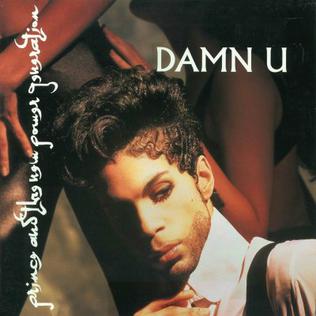
"Damn U" is a song by American musician Prince and the New Power Generation, released in November 1992 as the fourth single from his fourteenth studio album, Love Symbol (1992). It is a slow-grooving romantic R&B ballad, featuring strings and violin. Prince sings of a woman who affects him greatly emotionally, and uses the term "damn u" as an expression of surprise at the woman's power over him. His vocal range shifts throughout the song from very high falsetto to his deeper lower baritone. The B-side was "2 Whom It May Concern", which was also available on the maxi single for "7". Its music video was directed by Randee St. Nicholas.

"My Lovin' (You're Never Gonna Get It)" is a song by American pop/R&B group En Vogue, released in March 1992 as the lead single from their multi-platinum second album, Funky Divas (1992).

"Too Funky" is a song written and performed by English singer and songwriter George Michael and released by Columbia Records in the United States and Epic Records elsewhere in 1992. The song was Michael's final single for his recording contract with Sony Music before he started legal action to extricate himself from it.

"Free Your Mind" is a song by American female group En Vogue from their second album, Funky Divas (1992). The track was composed and produced by Foster and McElroy. They were inspired by the Funkadelic song "Free Your Mind and Your Ass Will Follow." The guitar and bass tracks for the song were written and recorded by San Francisco-based guitarist Jinx Jones. The opening line: "Prejudice, wrote a song about it. Like to hear it? Here it go!", is adapted from a line originally used by David Alan Grier's character Calhoun Tubbs from Fox's In Living Color.

"I'm Too Sexy" is a song by British pop band Right Said Fred, released in July 1991 by Tug Records as their debut single from their first album, Up (1992). The song was written by band members and brothers Fred Fairbrass and Richard Fairbrass with Rob Manzoli and peaked at number two on the UK Singles Chart. Outside the United Kingdom, it topped the charts in seven countries, including Australia, Canada, Ireland, and the United States. James Lebon directed the music video for the song, featuring various clips of models walking on the catwalk. In 2023, Billboard magazine ranked "I'm Too Sexy" among the 500 best pop songs of all time.

"Two Princes" is a song by American rock group Spin Doctors, released in 1992 by Epic as the second single from the group's debut album, Pocket Full of Kryptonite (1991). The song peaked at number seven on the US Billboard Hot 100 and number three on the Cash Box Top 100. Outside of the US, it topped the charts in Iceland and Sweden, and peaked within the top 10 of the charts in Australia, Canada, Germany, the Netherlands, Ireland, and the United Kingdom. The song earned them a Grammy Award nomination for Best Rock Performance by a Duo or Group. The group filmed two different music videos for "Two Princes"; one of them was in black-and-white. One of the videos was directed by Richard Murray and premiered in February 1992.

"Shoop" is the lead single released from American hip hop group Salt-N-Pepa's fourth studio album, Very Necessary (1993). The song was produced by group members Sandra "Pepa" Denton and Cheryl "Salt" James with Mark Sparks. It features an uncredited verse by rapper Otwane "Big Twan Lov-Her" Roberts. Released in September 1993 by Next Plateau, the song became one of the group's more successful singles, reaching number four on the US Billboard Hot 100 and topping the Hot Rap Singles chart at number one. Two months after its release, "Shoop" was certified gold by the RIAA; it went on to sell 1.2 million copies. Its accompanying music video was directed by Scott Kalvert. The success of both this single and the follow-up single "Whatta Man" propelled Very Necessary to sell over 5 million copies in the US, becoming the group's best-selling album.
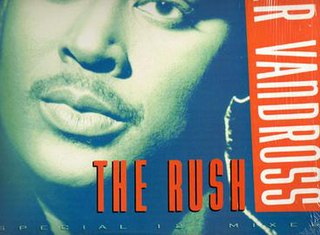
The Rush is a song by American recording R&B artist Luther Vandross', released as the third single from his 1991 album, Power of Love. It reached number six on the US R&B Singles chart and peaked at number 73 on Billboard's Hot 100 in January 1992. The next single to follow was "Sometimes It's Only Love".
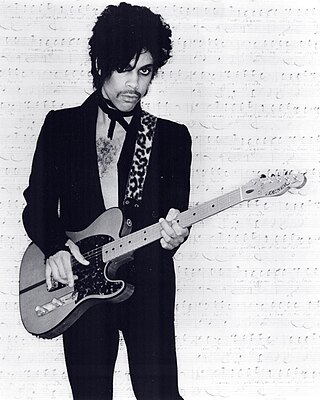
Prince released several hundred songs both under his own name and under pseudonyms and/or pen names, as well as writing songs which have been recorded by other artists. Estimates of the actual number of songs written by Prince range anywhere from 500 to well over 1,000. He has released 117 singles, 41 promotional singles, 24 internet singles, and eight internet downloads.



















